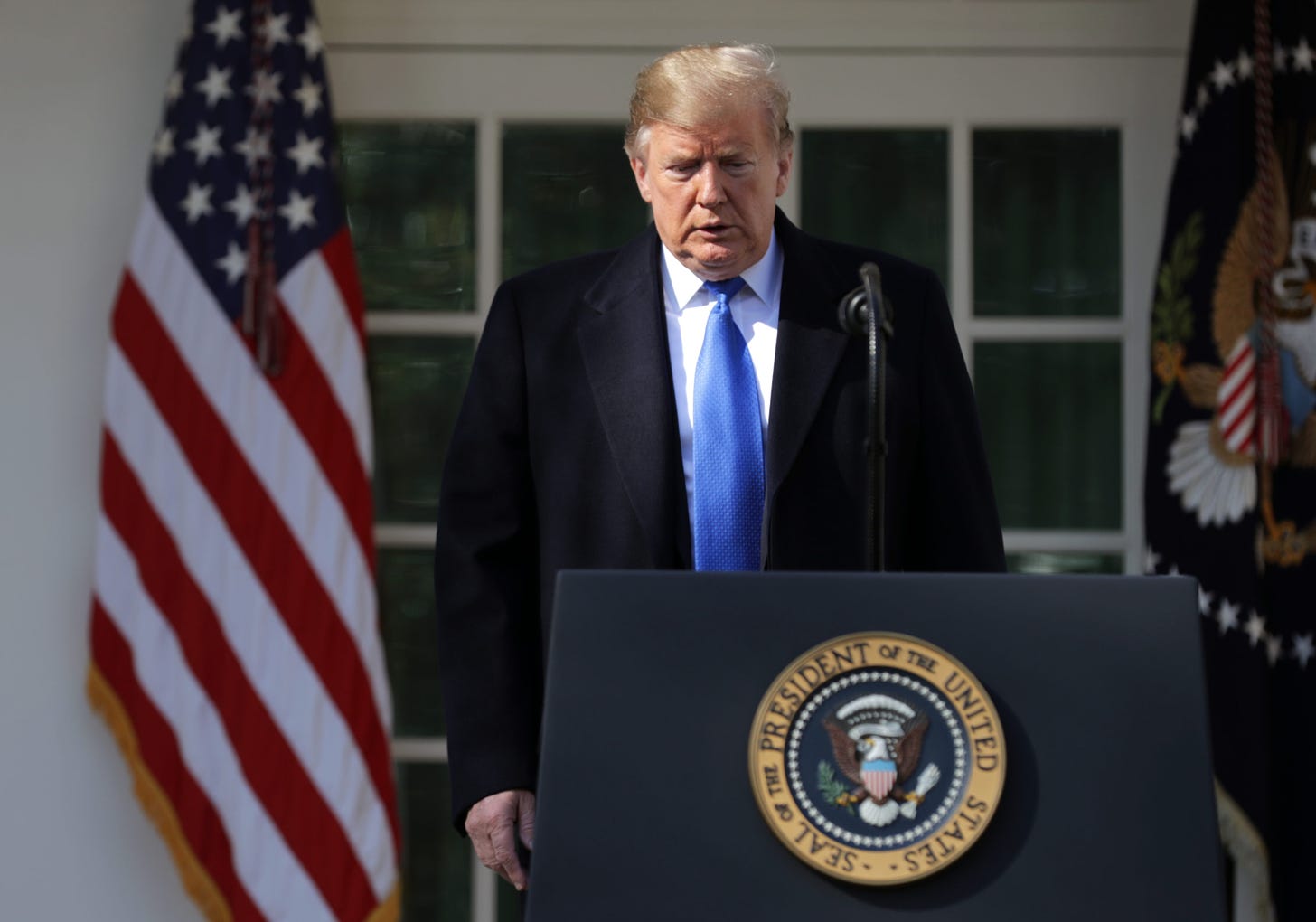Five Reasons the National Emergency Is a Huge Waste of Time
Let us start with eminent domain ...

After subjecting the nation to a 35-day government shutdown and agreeing only at the last minute to a spending bill to avoid another one, President Trump announced Friday that he’s declaring a national emergency to fund construction of a wall along the southern border.
"We're talking about an invasion of our country with drugs, human traffickers, all types of criminals and gangs," Trump said.
Trump announced the national emergency after saying it was "all a lie" that most drugs come through points of entry (it's not a lie), after saying that "walls work 100 percent" (they don't), and spouting off debunked statistics about crime in El Paso, Texas.
The bill he intends to sign contains $1.375 billion for border fencing – considerably lower than the $5.7 billion he initially requested and drastically lower than the $25 billion he could have had in February 2018 via legislation that offered a path to citizenship for Dreamers. Declaring a national emergency would, theoretically, allow the president to direct the Department of Defense to build the wall instead of things like schools, houses, and hospitals for the military and their families.
Although Trump technically has the power to order construction immediately, the wall won’t be going up any time soon. Here’s why:
Eminent domain. Large, unfenced portions of the border, especially in Texas, are privately owned. The Fifth Amendment requires that no “private property be taken for public use, without just compensation.” Legal battles over eminent domain can take years as the landowners and the government haggle over the exact dollar amount of “just compensation” in each case. Even if Trump were elected to another term, it’s possible some of the cases would still be in court when he left office.
Congressional override. Congress can overrule an emergency declaration with a majority vote of both houses, but the president can veto the measure. For Congress to override the veto, 55 Republicans in the House and 20 Republicans in the Senate would have to join all the Democrats to form supermajority coalitions. Under normal circumstances, overriding a presidential veto would be almost unimaginable with one house controlled by the president’s party. But seven Senate Republicans have already expressed opposition to the emergency declaration, including McConnell and Majority Whip John Thune. In the House, Mark Meadows has criticized the emergency strategy, raising the possibility he could rally his 33-member Freedom Caucus with him.
Other injunctions. The president’s powers to direct the Army Corps of Engineers to build the wall without congressional appropriation derive from the Military Construction Codification Act. The key provision reads: “In the event of a declaration of war or the declaration by the President of a national emergency in accordance with the National Emergencies Act … that requires use of the armed forces, the Secretary of Defense…may undertake military construction projects…” (Emphasis added.) Someone is likely to sue to stop construction of the wall on the grounds that a) hundreds of miles have already been built without the use of the armed forces, and b) policing the border doesn’t require the use of the armed forces, therefore the new construction doesn’t require use of the armed forces either. If a district court anywhere in the path of construction were convinced by such an argument, they could issue a nationwide injunction blocking construction. That would even further delay the government’s ability to use eminent domain to obtain land.
Administrative delay. In his two years in office, Trump has made several bold declarations pertaining to the military: Space Force, a military parade, and no “digital” catapults on the new class of aircraft carriers, just to name a few. The Pentagon has been able to redirect each of these into something it would rather do: Space Force is now a combatant command rather than a new force. The military parade was canceled because the Pentagon’s cost estimates were too high. The U.S.S. Gerald R. Ford does in fact use electromagnetic catapults and a digital launch system. The Department of Defense has shown a unique ability to interpret its orders to mean more or less what it wanted them to mean, and it could do the same thing with an order to build the wall. Don’t be surprised if the project isn’t shovel-ready, and requires months of exhaustive study.
Public opinion. Trump’s net approval fell from -16 to -22 during the shutdown, as 75 percent of Americans held Trump partially or fully responsible. Those numbers were bad enough to force Trump to relent and agree to reopen the government. Two-thirds of Americans disapprove of his using emergency powers to build the wall – and that number is likely to grow as legal challenges mount. If Trump’s approval ratings take another dive, he may cave again.
Any of these things may happen, and there are other, unforeseen obstacles that could arise. Either way, if you’re looking forward to a big, beautiful wall, don’t hold your breath.



